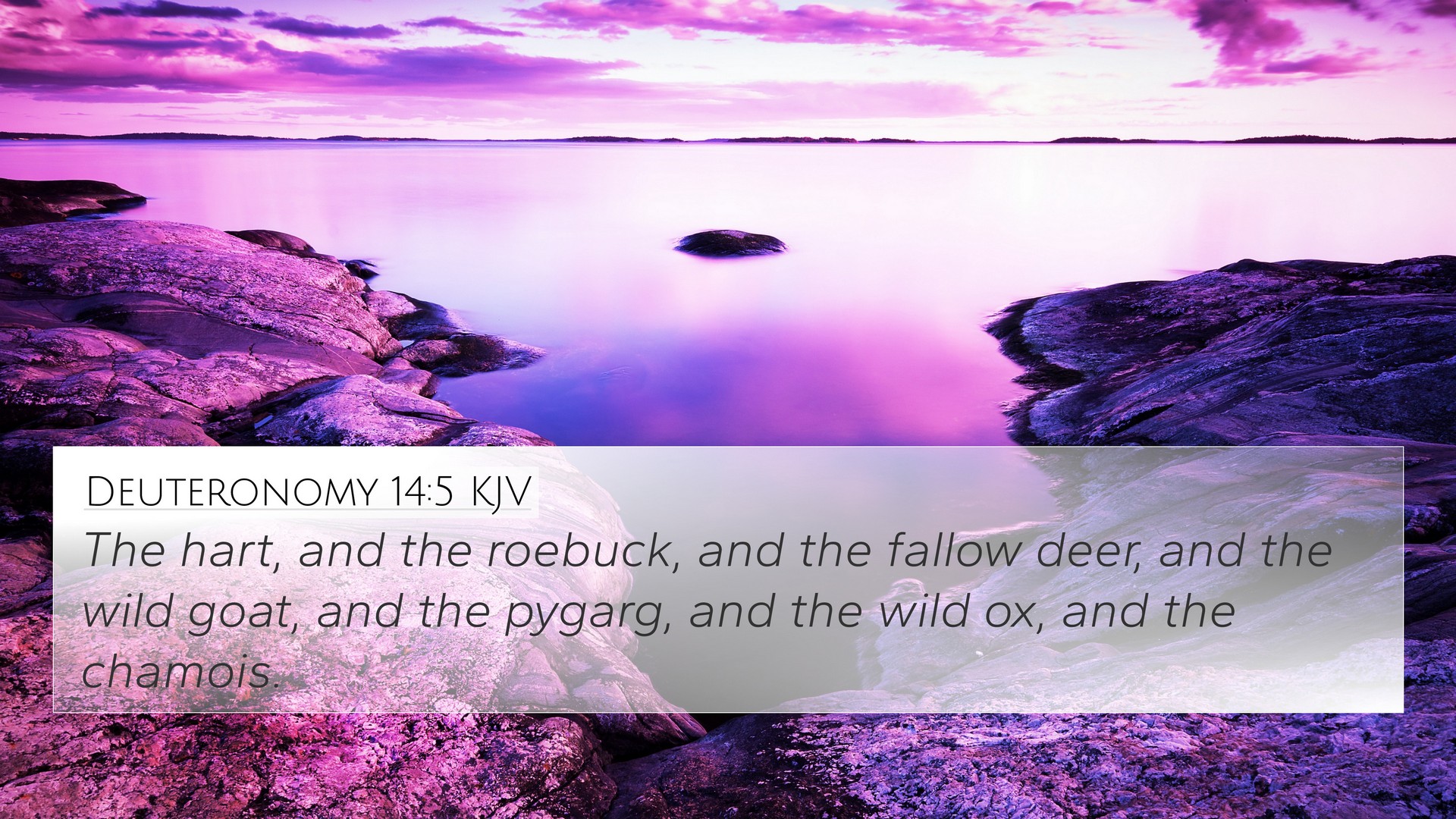Understanding Deuteronomy 14:5
Verse: "And the hart, and the roebuck, and the fallow deer, and the wild goat, and the pygarg, and the wildox, and the chamois." (Deuteronomy 14:5, KJV)
This verse lists various animals that are deemed clean and suitable for consumption according to Jewish dietary laws. The categorization of animals illustrates the importance of holiness and obedience to God's commandments.
Summary of Insights
The verse emphasizes God's specific instructions regarding clean and unclean animals, which serve both as practical dietary regulations and as symbols of spiritual purity.
Commentary Insights
Matthew Henry:
- Henry notes that the distinction between clean and unclean animals serves to highlight God's holiness and the need for His people to be set apart. These dietary laws were a way to encourage the Israelites to live a life that reflected their covenant relationship with God.
- The clean animals listed are significant as they contribute to the broader theme of holiness in the life of the believer.
Albert Barnes:
- Barnes points out that the specific mention of these animals illustrates God's provision for His people. The Israelites were familiar with the habits and characteristics of these creatures, thus making the regulations practical.
- He stresses the importance of these laws relating not just to diet but also to spiritual discipline and obedience.
Adam Clarke:
- Clarke elaborates on the types of animals mentioned and connects them to the cultural context of the Israelites, explaining how these laws set Israel apart from other nations.
- In his commentary, the emphasis is placed on how these dietary restrictions can be seen as reflecting deeper spiritual truths about cleanliness and purity.
Related Bible Verse Cross-References
- Leviticus 11:2-3: Detail similar dietary laws, emphasizing distinctions between clean and unclean animals.
- 1 Timothy 4:4-5: Discusses how everything created by God is good and can be received with thanksgiving when understood correctly.
- Matthew 15:11: Jesus emphasizes that what goes into the mouth does not defile a person, suggesting a passage from ritualistic laws to inner purity.
- Acts 10:15: Peter receives a vision that challenges previous dietary laws, indicating a shift in understanding cleanliness.
- Hebrews 10:1: Explains that the law was a shadow of the good things to come, emphasizing the transition from Old Covenant practices to the New Covenant realization in Christ.
- Isaiah 66:17: Offers a prophetic commentary on those who eat unclean things, directly correlating to the themes of cleanliness.
- Romans 14:14: Paul speaks on matters of conscience related to eating, affirming that nothing is unclean in itself.
Thematic Bible Verse Connections
This verse can lead to broader discussions on the themes of holiness, obedience, and the significance of dietary laws in the history of Israel. They serve as a reminder of the covenant relationship and the ethical dimensions of followers of God.
Conclusion
Deuteronomy 14:5 stands as a critical verse within the framework of Old Testament law, functioning not only as a set of dietary guidelines but as a deeper call to holiness and devotion in the life of the believer. Its connections to other scripture enrich our understanding and encourage a thoughtful examination of what it means to live according to God's instructions.
Using Cross-Referencing Bible Study
Tools for Bible cross-referencing can greatly enhance the study experience. Utilizing a Bible concordance or a cross-reference guide allows readers to uncover themes and discover how various scriptures illuminate one another.
Understanding how to find connections between Old and New Testament texts can be a fulfilling process that deepens your insights into scripture. It encourages an approach grounded in comprehensive Bible cross-reference materials.


